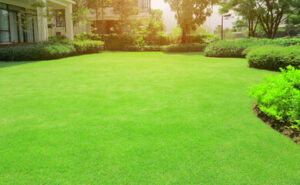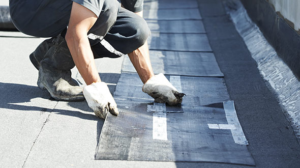A well-maintained septic system reduces the risk of ground contamination, system backup, and failure and helps protect you, your family, and your pets.
When wastewater enters your septic tank, solid materials sink to the bottom and form a sludge layer. Grease and other lightweight materials float to the top and form a layer called scum. Click the Septic Tank Services Near Me to learn more.

The septic tank serves as the collection point for all household wastewater. The heavy solids settle to the bottom of the tank, where bacteria break them down and form sludge. The lighter solids, such as fats and grease, float to the top of the tank, where they partially decompose into a layer of scum. The septic system’s distribution box evenly distributes the partially treated wastewater to pipes in the absorption field. Over time, the septic tank fills with waste and needs to be pumped out.
It’s recommended that a septic tank be pumped out every 3-5 years depending on household water usage and size. Regular septic tank pumping will help to extend the life of your septic system and keep it working efficiently.
Septic tanks that aren’t pumped regularly can become full of solids, which will then overflow into the drain field. The overflow will cause raw sewage to back up into the house, which is not only disgusting, but it can be harmful to the homeowner’s health as well as damaging to the property.
A septic professional will use a large vacuum truck to pump out the liquid and floating waste from the septic tank. They will first perform an inspection to find the septic tank’s access points and determine how much sludge and scum are built up in the septic tank. During the pumping process, the septic professional will alternately pump out the sludge and scum layers from the top and bottom of the tank. They will also inspect the septic tank for cracks and other damage.
Having a septic tank that is fully functional and free of debris can add value to the home and prevent bad odors in and around the property. It can also improve the environment for wildlife and people who live near the septic system. A well-functioning septic system can reduce the risk of contaminants getting into groundwater or surface water, which can be a serious problem for nearby bodies of water. By keeping a close eye on septic tank levels, homeowners can ensure that their tanks are pumped when necessary and avoid costly repairs.
Inspection
As a home owner, you should have your septic system regularly inspected. A home septic system is an integral component of the wastewater management process for your household, and it must be properly maintained in order to function effectively. Regular inspections can help prevent costly repairs or even a sewage backup.
A septic tank inspection typically consists of probing the absorption field to check the condition of the inlet and outlet baffles, and to see if water is being accepted by the drain field. It also includes checking the septic tank lid for cracks or other signs of wear and tear, and evaluating the operating liquid level of the tank. If the tank is buried, an inspection may include probing the area around the septic tank and inspecting the distribution box for cracks, decay or root intrusion.
During a non-invasive septic system inspection, a professional will use digital cameras designed specifically for septic systems to visually examine all important components of the septic tank and absorption system including the conveyance lines. The septic system professional may also use state-of-the-art digital location equipment to locate the buried septic system, eliminating the need for excavation.
A septic system inspector can assess the overall condition of the septic system and make recommendations to the home owner for any necessary repairs or maintenance. Ideally, routine service and regular septic tank pumping can keep the septic system in excellent working condition for many years to come.
Repair
Septic systems disperse and treat household waste for homeowners that do not connect to a municipal sewer system. They use a series of pipes and an underground tank to filter out solids and treat wastewater that is flushed into them. Like any other plumbing component, a septic system needs regular maintenance to keep working properly. When a homeowner fails to maintain their septic system, it can lead to serious problems and costly repairs that will require professional help.
When a home’s septic tank needs to be pumped, the first sign will usually be slow draining tubs and toilets. It can also be a pungent odor that wafts from the home’s drains and into the yard. When a septic tank fills with septage, odor-causing gases have nowhere to go and are forced out into the environment, where they can contaminate groundwater and cause sickness in those who breathe them in.
A septic tank that is too full will not be able to process and dispose of the wastewater it receives, so it will need to be emptied. A large tanker truck with vacuum equipment is used to remove the sludge from the bottom of the tank. Technicians may stir the contents of the septic tank before emptying it in order to better break up solids and speed up the decomposition process.
The septic system contains three distinct layers: a scum layer of fats and oils that are lighter than water; a wastewater or effluent layer that is comprised of pure, clean water; and a bottom sludge layer of heavier solids. When the septic system is not properly maintained, these solids can clog drain lines or even taint the groundwater around the septic system.
Other problems can arise from septic system neglect or abuse. An errant toy flushed down the toilet by an experimenting toddler; feminine hygiene products, paper towels, or food scraps in the kitchen drain; or a clogged sink can all lead to a septic tank clog that will need professional attention to resolve.
Other problems that can occur include septic tanks that are damaged or broken, which will need to be replaced. These tanks can be a fire hazard and will need to be safely removed and disposed of. Septic tanks that are not pumped regularly can also experience damage from tree roots. These roots will seep into the septic system and grow until they break through a tank or cause a leach field to overflow, damaging the groundwater. If a home’s septic system becomes contaminated with sewage, the entire house will be at risk of disease and sickness.
Maintenance
Like most of the other systems in your home, septic tanks are vulnerable to problems over time. Many of these issues are expensive to repair and can cause significant damage to your home, which is why preventative maintenance is so important. The best way to avoid costly repairs is to have your septic tank regularly cleaned and inspected by professionals.
Septic tank cleaning is a complex task that requires specialized equipment. It involves inserting a giant hose into the tank and using it to suck up liquid as well as any sludge or solids that have accumulated on top of the septic tank. This keeps the septic tank working as it should, and extends the lifespan of your septic system.
When you hire a professional to clean your septic tank, they will also inspect the drain field and inlet and outlet pipes. They will look for cracks, damage, or signs of clogging. They will also check to make sure the baffles are in place and properly installed. If any of these issues are found, they will be repaired as soon as possible to prevent further damage to your septic tank and drain field.
You can reduce the need for septic tank services by limiting the amount of water and waste you use. For example, you should not run excessive loads of laundry in one day, or use the garbage disposal too often. Excessive waste can overwhelm your septic tank and flood the drain field with wastewater, which is not good for your septic system or your health.
Another reason to have your septic tank serviced is to avoid a dangerous backup of sewage into the house. This can be very hazardous to your health and can even lead to serious health issues, such as dysentery, hepatitis, and typhoid. Septic tank systems are designed to handle the sewage from your home, but if it overflows, the untreated sewage can contaminate groundwater, which impacts drinking water for you and your family.
Having your septic tank regularly pumped and inspected by a professional can extend its lifespan and help to avoid expensive repair bills. When it comes to septic tank services, most homeowners are happier to spend the smaller, scheduled amount on preventative care than the large repair bill that could come from an unexpected system failure.


